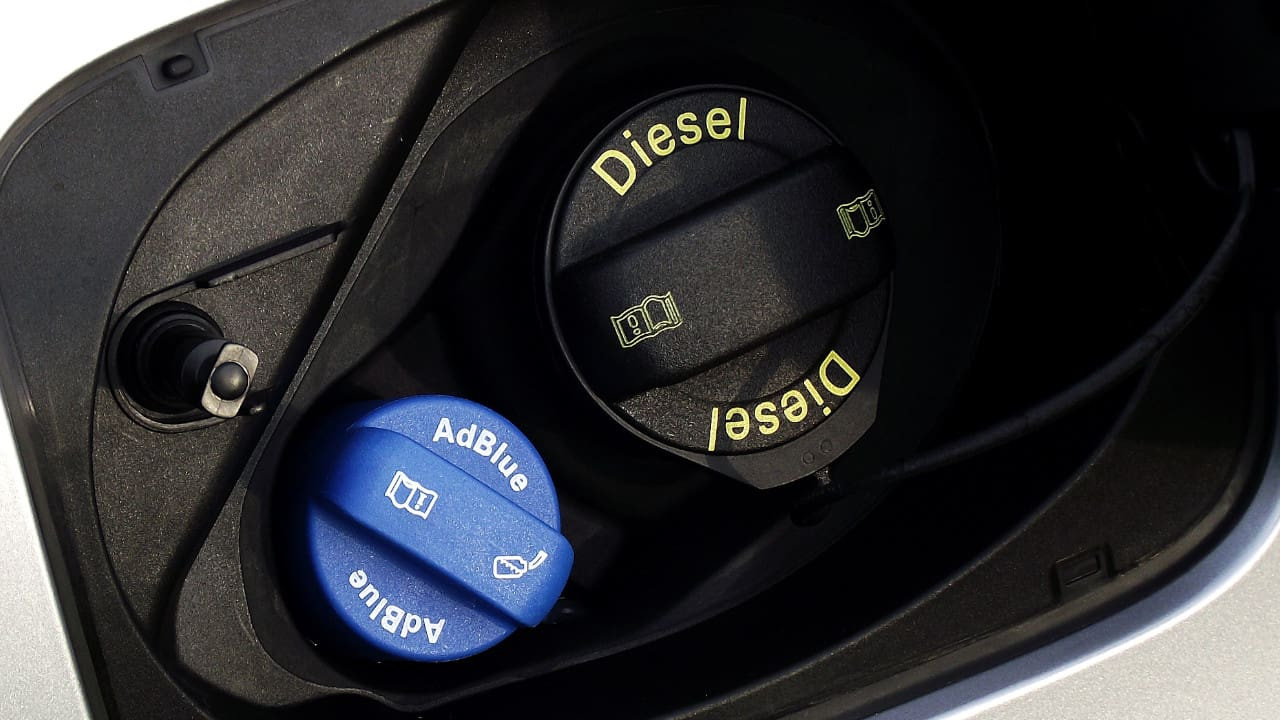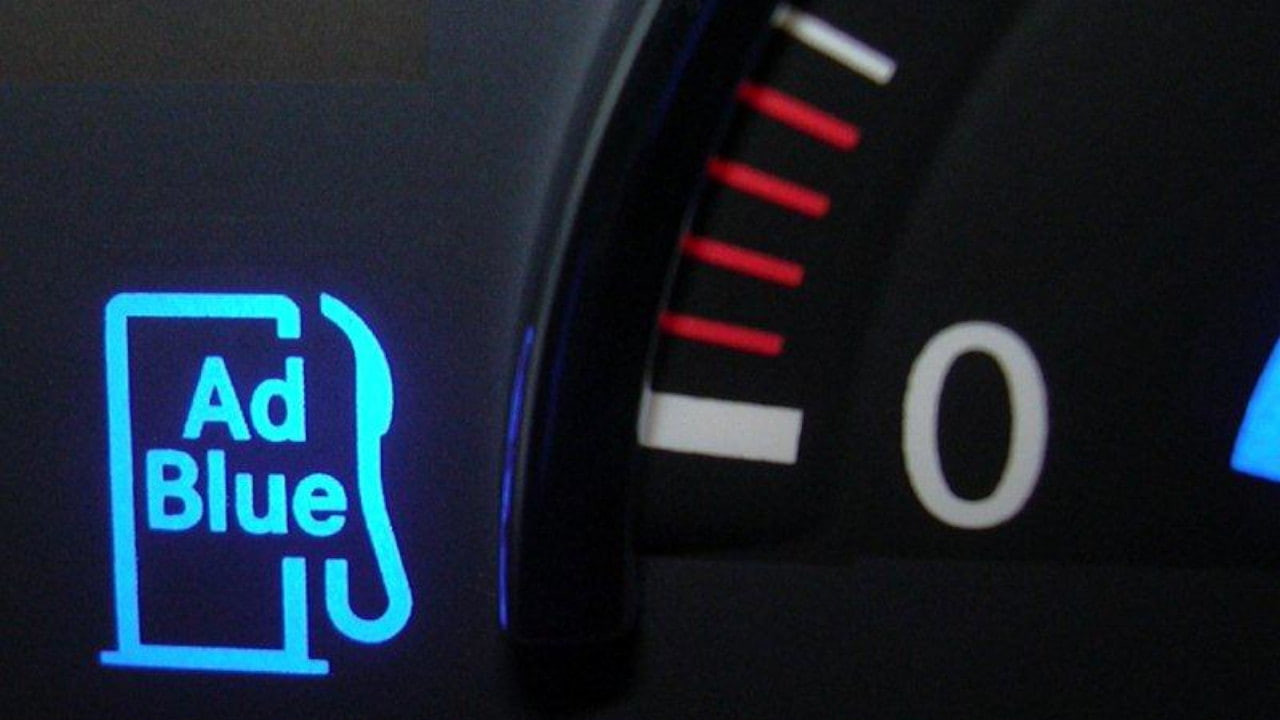1. Understanding the Mercedes C-Class AdBlue System
The Selective Catalytic Reduction (SCR) system is pivotal for reducing nitrogen oxide (NOx) emissions in diesel vehicles, aligning with stringent environmental regulations. AdBlue, a high-purity urea solution, plays a critical role in this system. ...
1. Understanding the Mercedes C-Class AdBlue System
The Selective Catalytic Reduction (SCR) system is pivotal for reducing nitrogen oxide (NOx) emissions in diesel vehicles, aligning with stringent environmental regulations. AdBlue, a high-purity urea solution, plays a critical role in this system. Let’s delve into the significance of AdBlue and its impact on the environment.
1.1. What is AdBlue?
AdBlue is a non-toxic, colorless, and odorless solution comprised of 32.5% urea and 67.5% deionized water. It’s essential for the SCR system in modern diesel engines, including those in the Mercedes C-Class.
1.2. How Does the SCR System Work?
The SCR system injects AdBlue into the exhaust stream. At high temperatures, AdBlue decomposes into ammonia and carbon dioxide. The ammonia then reacts with NOx in the catalytic converter, transforming them into harmless nitrogen and water. This process significantly reduces harmful emissions, making diesel vehicles more environmentally friendly.
1.3. Environmental Benefits
By reducing NOx emissions, the SCR system helps improve air quality and reduces the impact of diesel vehicles on the environment. This is particularly important in urban areas where air pollution is a major concern.
2. Mercedes C-Class AdBlue Tank Capacity: Key Facts
Knowing the AdBlue tank capacity of your Mercedes C-Class is crucial for proper maintenance. Let’s explore the specifics of tank sizes and the factors influencing AdBlue consumption.
2.1. AdBlue Tank Sizes Across Models
The AdBlue tank capacity in Mercedes C-Class models typically ranges from 20 to 25 liters. However, this can vary slightly depending on the specific model year and engine type. Here’s a detailed breakdown:
| Model Year |
Engine Type |
AdBlue Tank Capacity (Approximate) |
| 2015-2018 |
C220d |
25 Liters |
| 2019-2021 |
C300d |
23.5 Liters |
| 2022-2024 |
C200d |
22 Liters |
2.2. Factors Influencing AdBlue Consumption
Several factors can influence how quickly your Mercedes C-Class consumes AdBlue:
- Driving Style: Aggressive driving, frequent acceleration, and high speeds increase AdBlue consumption.
- Load: Carrying heavy loads or towing will result in higher AdBlue usage.
- Environmental Conditions: Cold weather can affect the efficiency of the SCR system, leading to increased AdBlue consumption.
- Engine Efficiency: Older or poorly maintained engines may use more AdBlue.
2.3. Average AdBlue Consumption Rates
On average, a Mercedes C-Class consumes about 1 liter of AdBlue per 1,000 kilometers (620 miles). This means a full tank (25 liters) can last between 20,000 to 25,000 kilometers (12,400 to 15,500 miles).
3. Checking Your AdBlue Level
Regularly monitoring your AdBlue level is essential to avoid any system warnings or shutdowns. Here’s how to check the AdBlue level in your Mercedes C-Class.
3.1. Using the Instrument Cluster Display
Modern Mercedes C-Class models feature an electronic display in the instrument cluster that shows the AdBlue level. Follow these steps to check:
- Turn on the ignition without starting the engine.
- Use the steering wheel controls to navigate to the “Service” menu.
- Select “AdBlue” to view the current level and remaining range.
3.2. Recognizing Warning Signs
Your Mercedes C-Class will provide warning messages when the AdBlue level is low. These warnings typically appear in stages:
- Initial Warning: A message indicates that the AdBlue level is low and prompts you to refill soon.
- Secondary Warning: As the level drops further, the warning becomes more persistent, often accompanied by an audible alert.
- Critical Warning: When the AdBlue level is critically low, the vehicle may limit engine power or prevent starting until the tank is refilled.
3.3. Consequences of Running Out of AdBlue
Running out of AdBlue can lead to severe consequences:
- Engine Performance Reduction: The engine control unit (ECU) may limit engine power to reduce emissions.
- No-Start Condition: In many cases, the vehicle will not start until the AdBlue tank is refilled.
- System Damage: Prolonged operation without AdBlue can damage the SCR system components, leading to costly repairs.
4. Refilling Your AdBlue Tank
Refilling the AdBlue tank is a straightforward process, but it’s essential to follow the correct steps to avoid spills and ensure proper system function.
4.1. Locating the AdBlue Filler Cap
The AdBlue filler cap is usually located next to the fuel filler cap under the fuel filler flap. In some models, it may be in the trunk or engine compartment. Consult your owner’s manual for the exact location.
4.2. Step-by-Step Refilling Guide
- Prepare: Wear gloves and eye protection to avoid skin and eye irritation.
- Open the Cap: Unscrew the AdBlue filler cap.
- Refill: Use an AdBlue bottle or filling station nozzle to add the fluid. Avoid overfilling.
- Clean Up: Wipe away any spills with a clean cloth.
- Close the Cap: Securely tighten the AdBlue filler cap.
- Reset Warning: In some cases, you may need to start the engine and drive for a short distance to reset the warning message.
4.3. Safety Precautions
- Avoid Contamination: Use only clean funnels and containers to prevent contamination of the AdBlue.
- Proper Ventilation: Refill the AdBlue tank in a well-ventilated area.
- Skin and Eye Contact: If AdBlue comes into contact with skin or eyes, rinse immediately with plenty of water.
- Use Correct Fluid: Only use AdBlue that meets the ISO 22241 standard.
5. Troubleshooting Common AdBlue System Issues
Like any complex system, the AdBlue system can experience issues. Here are some common problems and how to address them.
5.1. Common Problems
- AdBlue Warning Light Stays On: Even after refilling, the warning light may persist due to sensor issues or a faulty SCR system.
- Crystallization: AdBlue can crystallize in the tank or injector, causing blockages.
- Sensor Malfunctions: Faulty sensors can provide incorrect readings, leading to warning messages or system errors.
- Injector Problems: A malfunctioning injector can disrupt the AdBlue injection process, affecting emissions control.
Using professional diagnostic tools can help pinpoint the exact cause of AdBlue system problems. At CARDIAGTECH.NET, we offer a range of advanced diagnostic tools that can read fault codes, monitor sensor data, and perform system tests. These tools are essential for accurate diagnosis and efficient repairs. Our tools provide accurate and reliable diagnostics, enabling you to resolve issues efficiently. Contact us at +1 (641) 206-8880 for more details.
5.3. DIY vs. Professional Repairs
While some AdBlue system issues can be resolved with simple DIY steps, others require professional expertise. If you’re not comfortable working on your vehicle or if the problem persists after basic troubleshooting, it’s best to consult a qualified mechanic.
6. Benefits of Using High-Quality AdBlue
The quality of AdBlue can significantly impact the performance and longevity of your SCR system.
6.1. Meeting ISO 22241 Standards
High-quality AdBlue adheres to the ISO 22241 standard, ensuring purity and proper urea concentration. Using substandard AdBlue can lead to system damage and increased emissions.
6.2. Preventing Contamination
Contaminants in low-quality AdBlue can clog the injector and damage the catalytic converter, resulting in costly repairs.
High-quality AdBlue ensures that the SCR system operates efficiently, reducing emissions and maintaining optimal engine performance.
7. AdBlue System Maintenance Tips
Regular maintenance is crucial for keeping your AdBlue system in top condition.
7.1. Regular Inspections
Periodically inspect the AdBlue tank, lines, and injector for leaks or damage. Address any issues promptly to prevent further complications.
7.2. Proper Storage
Store AdBlue in a cool, dry place away from direct sunlight. Ensure the container is tightly sealed to prevent contamination.
7.3. Avoiding Overfilling
When refilling the AdBlue tank, avoid overfilling. Overfilling can damage the system and lead to leaks.
8. Addressing AdBlue Warning Lights
Dealing with AdBlue warning lights promptly can prevent potential system damage and ensure compliance with emissions regulations.
8.1. Understanding Warning Light Meanings
Different AdBlue warning lights indicate specific issues. Consult your owner’s manual or a trusted mechanic to understand the meaning of each warning light and take appropriate action.
8.2. Resetting the Warning Light
In some cases, the AdBlue warning light may remain on even after refilling the tank. You may need to drive for a short distance or use a diagnostic tool to reset the warning light.
8.3. Seeking Professional Assistance
If the AdBlue warning light persists or if you encounter other system issues, seek professional assistance from a qualified mechanic.
9. The Future of AdBlue Systems
As environmental regulations become increasingly stringent, AdBlue systems will continue to play a vital role in reducing emissions from diesel vehicles.
9.1. Evolving Technology
Manufacturers are continuously developing more efficient and reliable AdBlue systems to meet evolving emissions standards.
9.2. Integration with Electric Vehicles
With the rise of electric vehicles, AdBlue systems may eventually be phased out in favor of zero-emission technologies.
9.3. Continued Importance
In the meantime, AdBlue systems will remain essential for reducing emissions from diesel vehicles and improving air quality.
At CARDIAGTECH.NET, we offer a comprehensive range of diagnostic tools to help you maintain your Mercedes C-Class AdBlue system and address any issues that may arise.
Our diagnostic tools provide advanced capabilities, including fault code reading, sensor data monitoring, and system testing. These tools are essential for accurate diagnosis and efficient repairs.
- Accurate Diagnostics: Our tools provide precise and reliable diagnostics, enabling you to identify issues quickly and effectively.
- Comprehensive Coverage: We offer tools that cover a wide range of Mercedes C-Class models and systems.
- User-Friendly Interface: Our tools feature intuitive interfaces, making them easy to use for both professionals and DIY enthusiasts.
- Expert Support: Our team of experienced technicians is available to provide expert support and guidance.
10.3. How to Purchase
You can purchase our diagnostic tools directly from our website, CARDIAGTECH.NET, or by contacting us at +1 (641) 206-8880. We offer competitive pricing and fast shipping. Our address is 276 Reock St, City of Orange, NJ 07050, United States.
11. Conclusion
Understanding the Mercedes C-Class AdBlue tank capacity, maintenance requirements, and troubleshooting tips is essential for keeping your vehicle running smoothly and complying with environmental regulations. By following the guidance provided in this article and utilizing high-quality diagnostic tools from CARDIAGTECH.NET, you can ensure optimal performance and longevity of your AdBlue system.





